How To Copy Color Settings In Premiere
Color grading is an advanced video editing technique. It allows you to edit the way colors announced on film in post-production. With color grading, you can make scenes more than lifelike, achieve a specific look, or infuse emotion into a scene.
In this three-part tutorial on color grading, we'll comprehend everything, from basic fundamentals to advanced techniques. Although this tutorial is based on Adobe Premiere Pro and DaVinci Resolve, the process is substantially the same no thing what software you lot're using.
Permit's dive into the starting time episode – colour grading fundamentals in Adobe Premiere Pro!
Overview of Color Grading Fundamentals
In this episode of our How To Video series, Nick LaClair, caput of video production at SproutVideo, walks us through the basics of color grading in Adobe Premiere. Even if you employ a different editing suite for your videos, his thorough guide will still help yous optimize your workflow since the basic concepts will carry over.
When Is Color Grading Necessary?
If your video looks a little apartment, if you lot filmed on dissimilar cameras, or if you lot're recording LOG footage, you'll probably need to color class your footage.
Note: LOG footage is desaturated, depression-contrast footage that many professional cameras shoot. It is designed to retain the most information in the footage (without losing highlights that are blown out or shadows that are too dark). It is the best fashion to shoot footage, but it is an intermediary, and needs to exist color graded into a concluding image earlier information technology's ready for viewing.
Usually, color grading is the last footstep after editing your video downwardly to a concluding cut. All your other edits should exist locked before you get to this stage. Otherwise, yous'll waste material a lot of time redoing your tweaks to colors. Depending on the process yous utilize, that could exist a lot of time!
How to Color Grade in Adobe Premiere
Adobe Premiere is best if your color grading needs are minimal. For case, it can handle tweaks to exposure and color temperature very well.
Applying Lumetri as an Consequence
Lumetri is a tool built into Adobe, and can exist applied as an consequence to the clips you're editing in the timeline from the Effects listing. If you access it in that mode, you'll use the Effect Controls card to make changes.
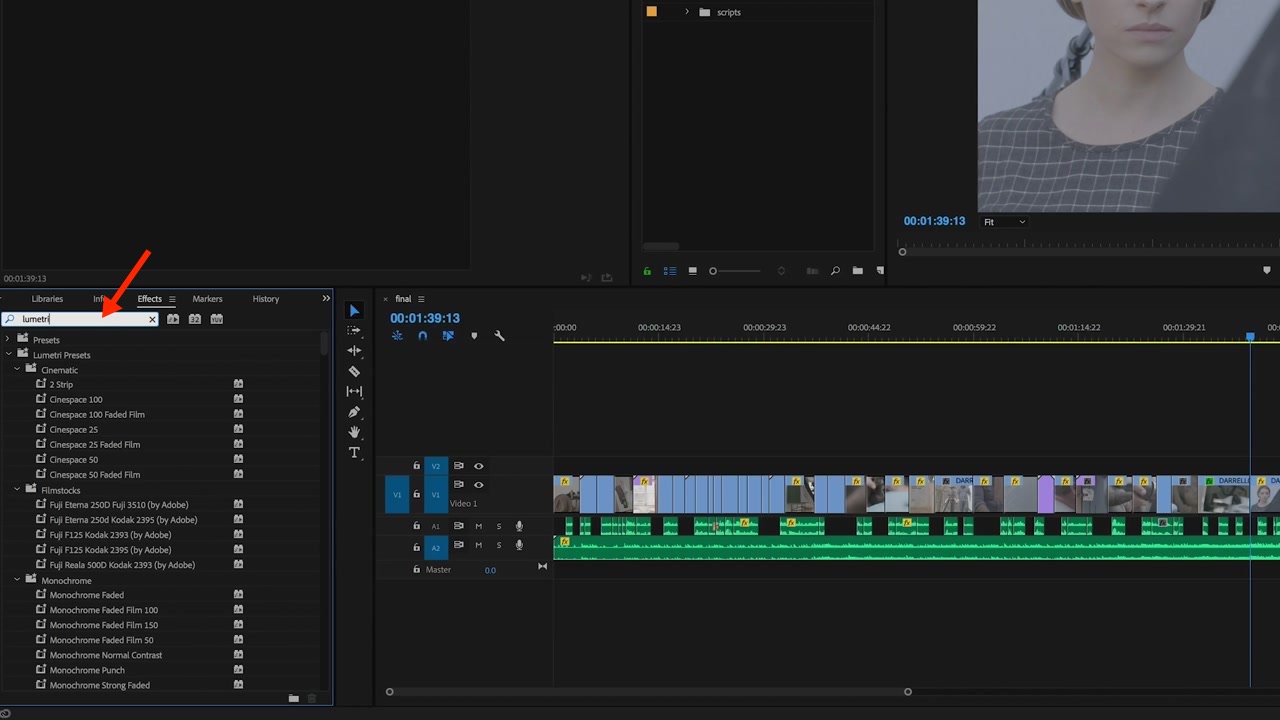
Accessing the Color Grading Workspace in Premiere
Alternatively, you can navigate to Lumetri within Premiere past selecting the Color tab at the peak of the screen to bring up the color grading workspace.
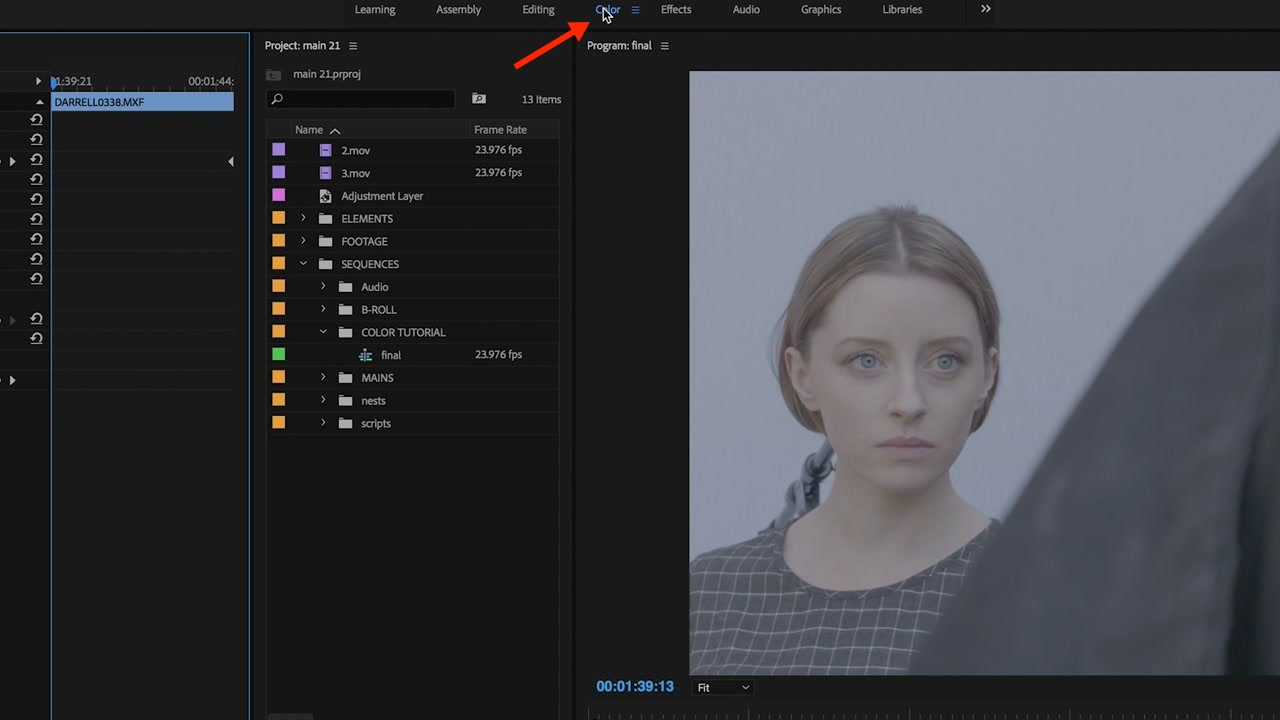
Premiere will automatically select the clip under the playhead, and the Lumetri corrections will open on the right hand side of the screen. And then, you'll desire to make sure the Lumetri scopes are as well visible on the left.
The waveform telescopic appears automatically (more than on exactly what that is beneath), just if yous right click it, y'all can open up other options as well.
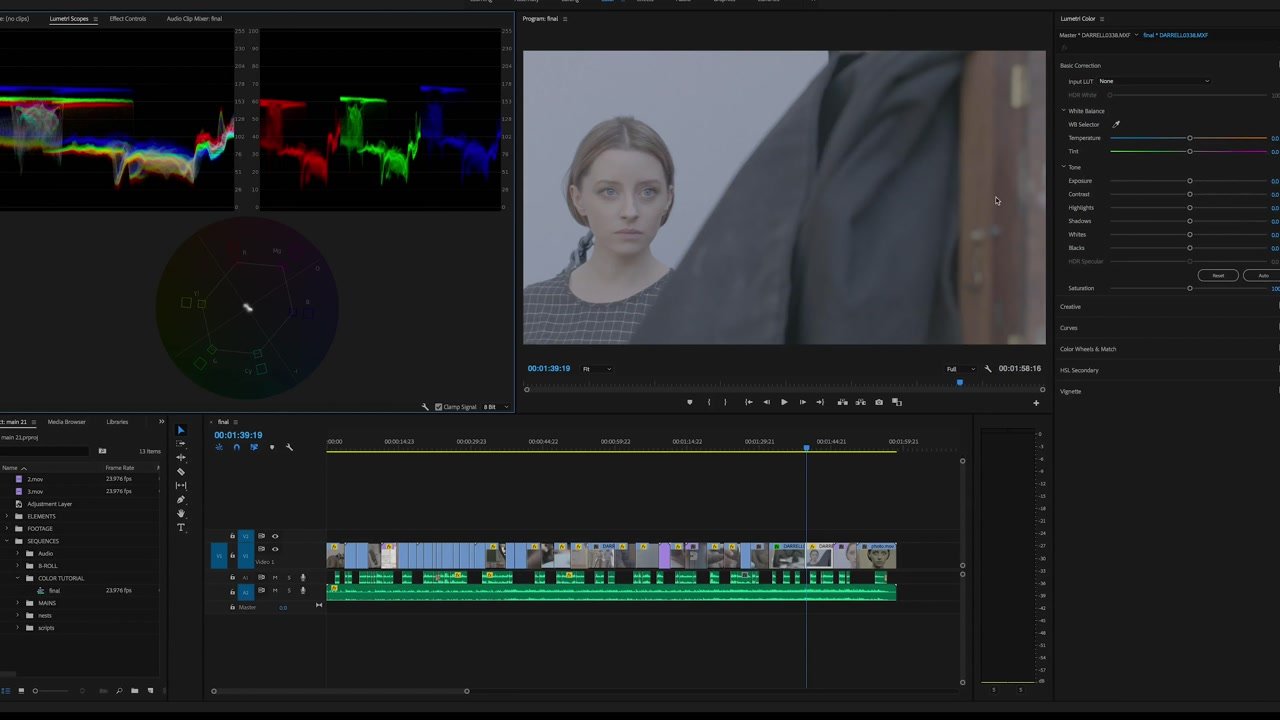
Overview of Lumetri Scopes
At that place are different scopes bachelor to help yous suit the colors in your video. We've covered the three principal types available (shown on the left in the image above), with tips for using each one.
Waveform Monitor
The colorful, nebulous graph shown in the summit left of the epitome above is called a waveform. Waveforms are the well-nigh reliable tool for adjusting the color of your epitome because while monitors and settings can vary tremendously, the scope volition always exist consistent.
The Y axis goes from zero, or pure black, to one hundred, pure white. Information technology shows you how dark or vivid different areas of your prototype are.
The waveform, from left to right, corresponds to your image. In the case beneath, the bright areas to the left stand for a brilliant area behind the female subject, while the nighttime areas to the right represent to the person in the foreground, partially blocking our view.
Seeing the relative brightness of every element in your frame is a powerful tool considering gives you precise data on where your picture exists in the space betwixt as well-dark and too-vivid, and allows y'all to adjust information technology within that space.
Parade
The parade scope is shown to the correct of the waveform in the image above. This choice breaks out the red, greenish, and blue waveforms of your image and so yous tin evaluate them side-by-side. This is handy when you lot demand to achieve a specific white balance in your image.
Vectorscope
The round scope beneath the waveform and the parade scope is called a vectorscope. This scope shows you lot where your image falls on the color bicycle. It'south particularly useful for finding a neutral white point.
Using the Scopes
Each of these scopes will adjust dynamically as you lot make changes to the brightness, dissimilarity, and white balance in your image. They give yous quantitative data to complement how the image looks to you lot subjectively.
If y'all have any white elements in your image, you'll know your color settings are but about right when the cherry, light-green and blue waveforms all look equal.
Additional Adjustments
Basic Correction
The Basic Correction section might be more aptly named Major Correction. Information technology contains settings for dramatically changing your visuals.
For starters, you can add together a LUT, which stands for Look Up Table. A LUT is substantially a shortcut for calculation preconfigured color settings based on the color space in which your footage is shot. For case, if you shoot LOG footage, a LUT will catechumen it to full-colour, full-contrast footage automatically and then you don't have to practice it by hand.
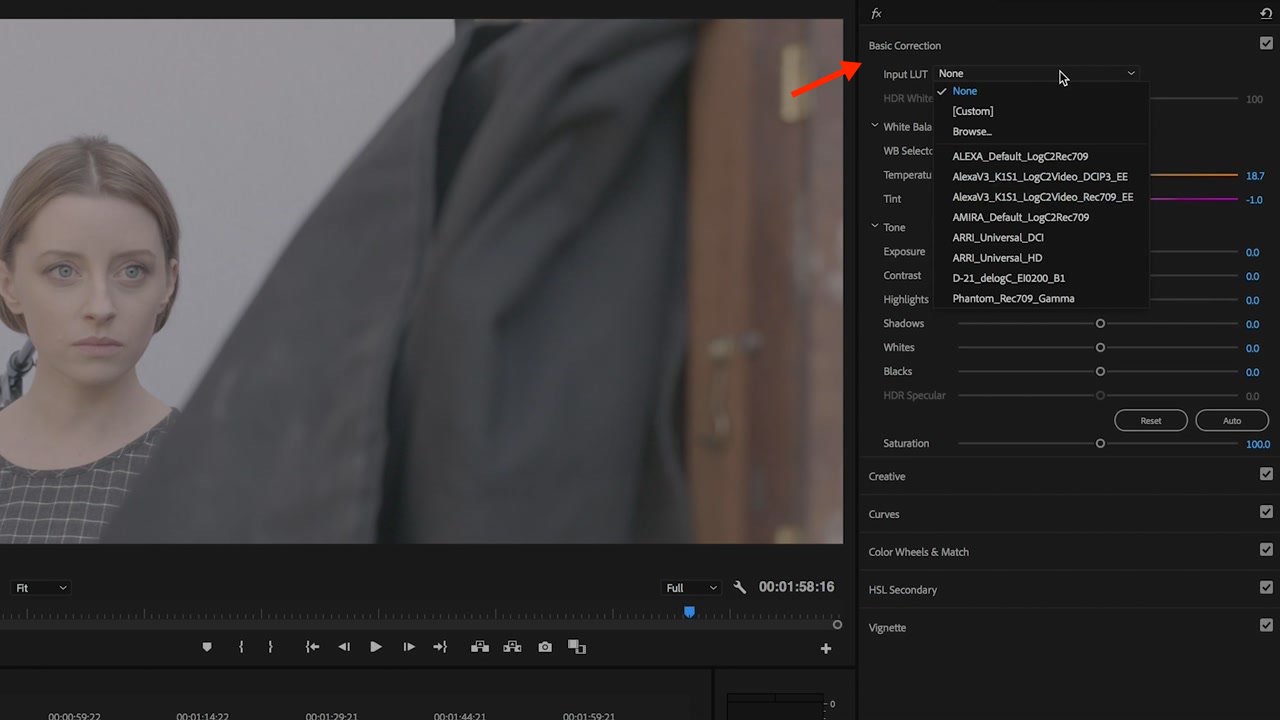
Across LUTs, yous can tweak the color temperature, hue, exposure, and contrast. Yous can even use sliders to arrange dissimilar areas of luminance in your image. The latter is handy if you lot accept an area that is too bright or too dark in your prototype.
Creative and Curves
You lot can as well add together what are known as Creative looks in the next section. Option from preconfigured settings, or, create something unique by going with the Custom option. And you can edit curves, which are a more finely controllable manner of irresolute the contrast of your footage.
Color Wheels and Friction match
Professional colorists use tools built around the concept of these different wheels. They enable minute adjustments to unlike aspects of the paradigm, and are across the purview of this primer in color grading fundamentals in Adobe.
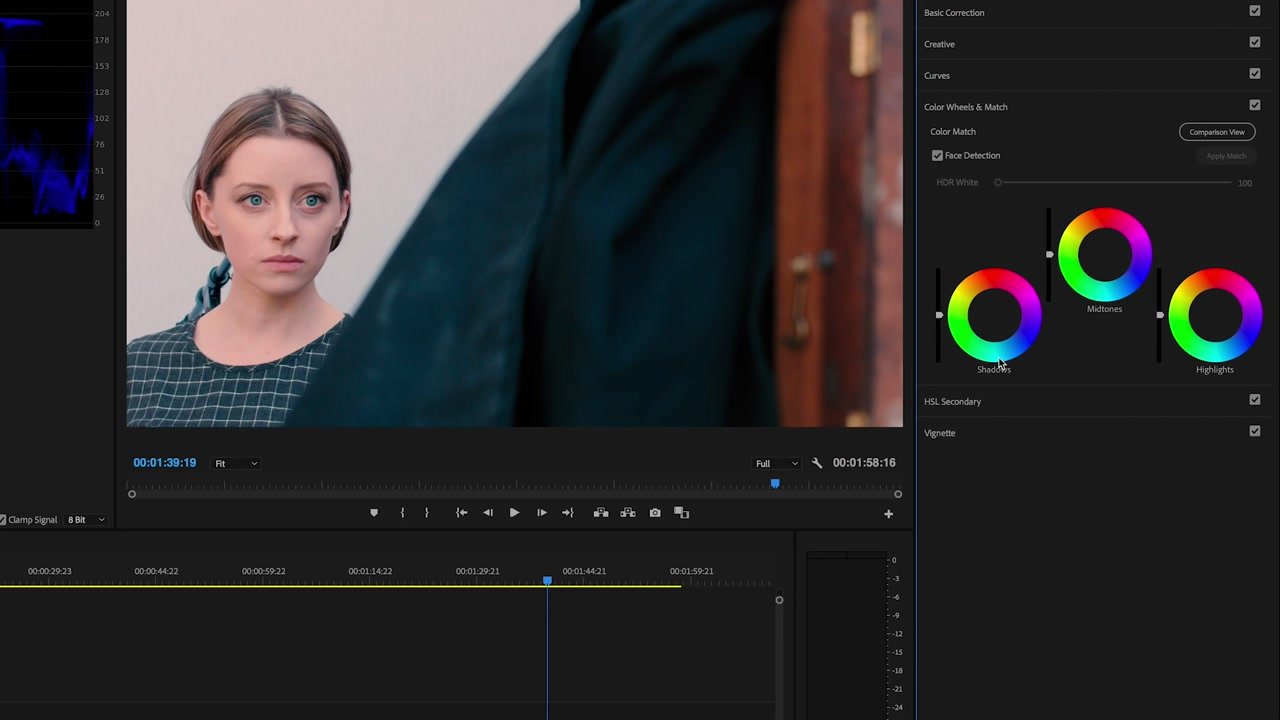
Color Grading Workflows in Premiere
I big advantage of using Adobe Premiere is that yous can keep editing your video after you've graded your footage. Still, there are some drawbacks.
Each of these grades is applied to your clip every bit an effect. It's relatively easy to copy the settings from ane clip and apply them to other clips. You just right click the clip you've already graded and select copy. Then, select your other clips, correct click, and apply Paste Attributes to apply those settings to the selected clips.
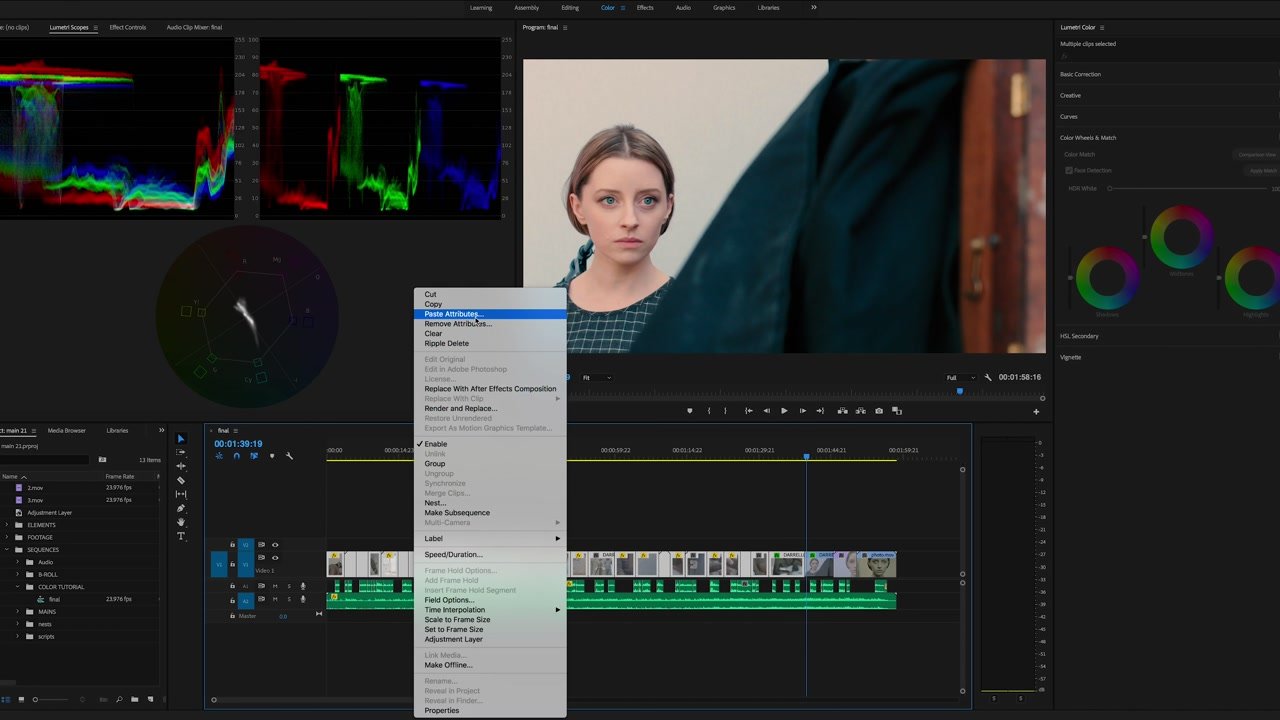
Color Matching
However, you might find that the verbal same color settings don't work across all the scenes in your video. Lumetri provides convenient tools for correcting that issue. Simply compare the ii clips side by side, and employ the Color Friction match tool to accomplish a more consequent await.

Applying the new settings to other clips is a little tricky. If you but re-create and paste the attributes, as described higher up, you will be calculation i colour effect on top of some other. This is unlikely to deliver the desired result.
Instead, you lot have to get-go remove any existing Lumetri furnishings from the clips y'all want to adjust. After doing and then, you tin can and then paste the attributes from your color matched clip. Select the clips that accept existing Lumetri furnishings, right click, and select "Remove Attributes". Be sure the "Effects" option is checked.
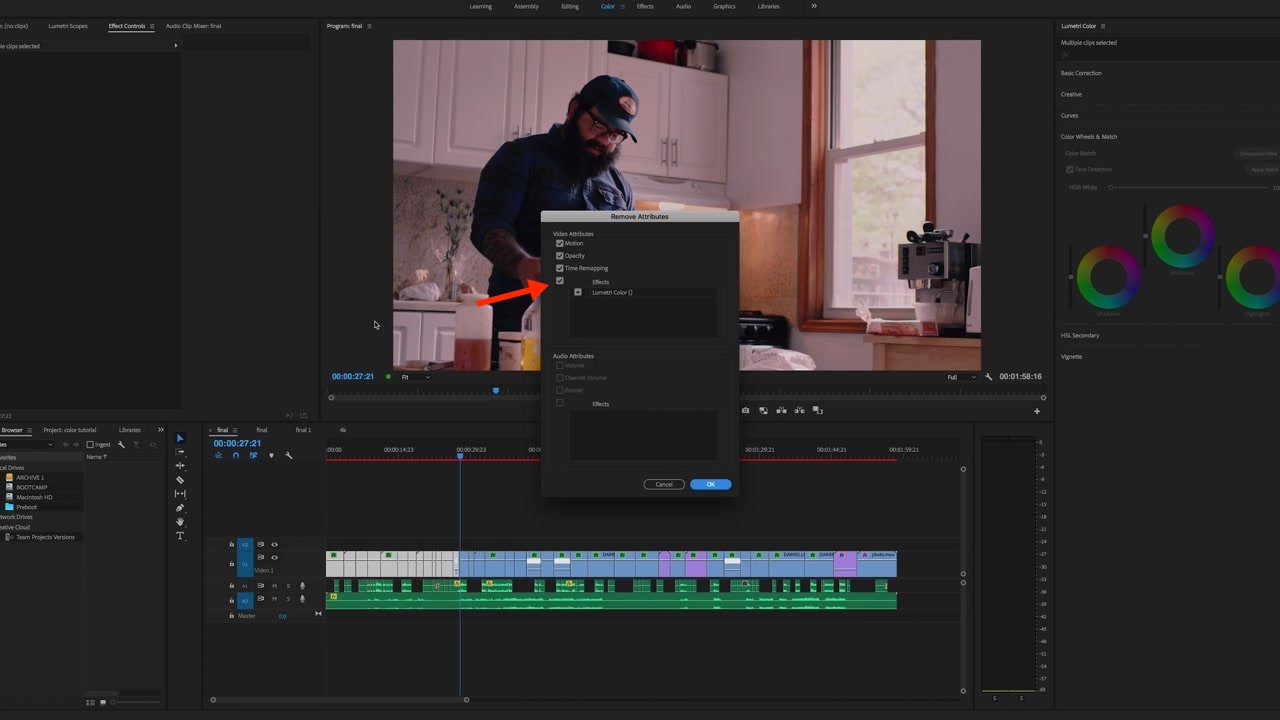
Adjustment Layer
The above workflow can admittedly be pretty clunky. Whether or not it'll work for you lot largely depends on the complexity of the film you are editing.
Some other option is to apply adjustment layers instead of applying the Lumetri effects directly to your clips. This enables yous to cut your aligning layer to fit only sure clips, and avoid having to copy, paste, suit, remove, paste… repeatedly. The adjustment layer is the purple layer in the timeline shown in the image below.
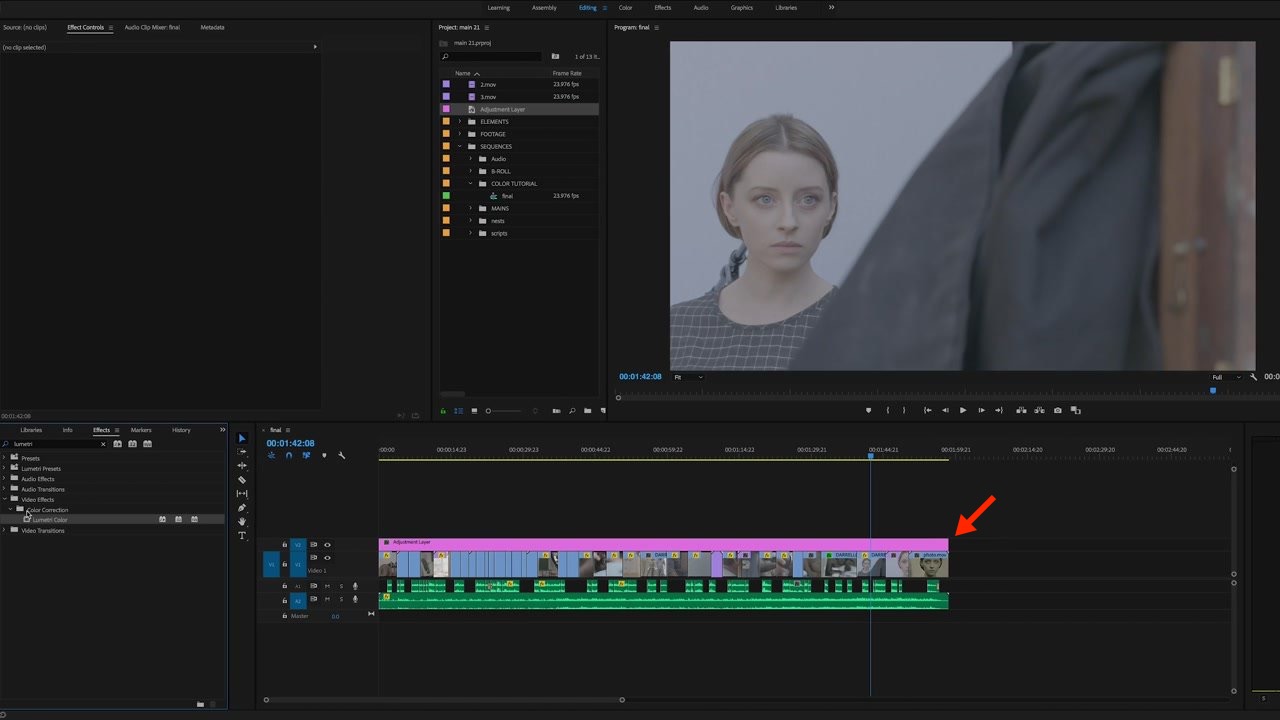
Drawbacks to Using Premiere
While you can certainly attain good results when using Premiere for color grading, it isn't considered a professional person color workflow. The master reason is considering Premiere isn't a "colour managed" application. So, what does that mean exactly?
Basically, your footage won't look the same in Premiere equally it does on the web or wherever information technology'due south being shared. This makes achieving a specific terminate upshot challenging, since it'southward really difficult to compensate for these changes. If yous desire to know more than that, and actually desire your head to spin, hither is a fun entry indicate to the rabbit hole on color management in video applications.
Solutions for Colour Management
In some cases, getting the colour just right actually, really matters and the differences betwixt what you see in Premiere and your final output might be too different to brand information technology a feasible choice for y'all. Luckily, there are solutions for situations like that.
One potential option is to use a colour managed video editing application from the start, such as Concluding Cut Pro. Nevertheless, you're likely to be ameliorate off using a purpose-built color grading application, like DaVinci Resolve.
DaVinci Resolve has more advanced features than Lumetri. More than chiefly, it enables yous to achieve a consistent look no matter how you share your video once it's finalized. In the upcoming second episode of this three-part series on colour grading, we'll walk you through the circular trip workflow of editing in Premiere, color grading in DaVinci, and finalizing your motion picture in Premiere.
Source: https://sproutvideo.com/blog/color-grading-fundamentals-adobe-premiere-pro.html

0 Response to "How To Copy Color Settings In Premiere"
Post a Comment